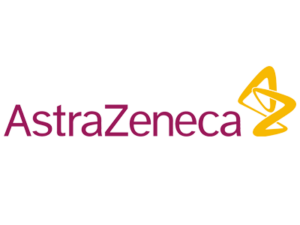Presented by Prof Dr Hans Wildiers (University hospitals Leuven, Belgium)
In this video, Prof Dr Hans Wildiers, medical oncologist at the University Hospitals Leuven (Belgium), shares the key take aways from an educational session at SABCS 2024 discussing the management of breast cancer in older patients.
In a first presentation of the session, Dr Lajos Puzstai (Yale school of medicine, New Haven, CT, USA) zoomed in on the specific biology of breast cancers in older patients. In this light he underscored that the proportion of luminal breast cancers is higher among older patients and that these tumours also seem to be more oestrogen sensitive than similar tumours in younger patients. In addition to this, also the mutational landscape and the tumoral stroma differs between cancers from older and younger patients.
In a second presentation, Dr Christina Minami, a breast surgeon at the Brigham and Women’s Hospital in Boston (MA, USA) discussed the challenges related to local therapy for elderly breast cancer patients. In patients with an oestrogen-receptor positive (ER+) tumour there continues to be a dilemma between upfront surgery and primary endocrine therapy (ET). To help in this decision, tools like the Age Gap decision tool have been developed. With respect to surgery, several studies have recently shown that a sentinel lymph node dissection can safely be omitted in a significant proportion of patients with clinically node negative disease. In the final part of her presentation, Dr Minami turned the focus to radiotherapy. According to the PRIME2 study, adjuvant radiotherapy can be omitted in patients with low-risk luminal breast cancer if they receive ET. However, at SABCS 2024, results of the EUROPA trial showed that ET has a more profound impact on quality of life than radiotherapy in this setting. As such, the debate between adjuvant ET or radiotherapy is still ongoing.
In the final presentation, Prof Wildiers shared his views on the use of systemic therapy in older breast cancer patients. For patients with ER+ early breast cancer (EBC), the ASTER70 study recently showed that adjuvant chemotherapy does not provide a clinical benefit in older patients. However, further subgroup analyses of this trial are needed to see if this is true for all patients, or whether there are some high-risk patients that do benefit from adjuvant chemotherapy. For patients with high-risk ER+ EBC the MonarchE and NATALEE trials have shown a benefit of adding a CDK4/6 inhibitor to the standard ET. Subgroup data of these trials indicate that this is also true for older patients. In the coming years, results of the APALACHES trial will shed light on the question whether a combination of ET and a CDK4/6 inhibitor is able to replace adjuvant chemotherapy in this high-risk setting. If positive, this would provide a much more tolerable treatment strategy for older patients. For patients with early-stage triple negative breast cancer (TNBC), the current standard of care consists of the Keynote-522 regimen. However, this intensive regimen is not feasible in a large proportion of older patients. More tolerable strategies therefore need to be developed for older patients with triple-negative EBC. In younger patients with stage II/III HER2-positive breast cancer, the standard of care consists of TCHP. However, this regimen also proves to be challenging in older patients. For these older patients, it is often necessary to de-escalate the chemotherapy and opt for a regimen that does not contain an anthracycline or even avoid carboplatin. In practice, a combination of a taxane with trastuzumab with or without pertuzumab may be a more tolerable alternative.
For patients with HR+/HER2- metastatic breast cancer the combination of ET with a CDK4/6 inhibitor has become standard of care. However, based on the results of the SONIA trial it may be safe to opt for ET alone in older patients with a low disease burden, or a poor performance status. For older patients with advanced TNBC it may be wise to think about an oral drug, such as cyclophosphamide or capecitabine, instead of a standard carboplatin or paclitaxel based chemotherapy regimen. For HER2+ advanced breast cancer, the long-standing first line standard consists of the CLEOPATRA regimen. However, this taxane-containing regimen may be too intensive for a proportion of older patients. For patients with HER2+ and HR positive disease, the PATINA trial demonstrated the potential of a palbociclib-ET combination following induction chemotherapy (taxane/vinorelbine-trastuzumab +/- pertuzumab). Should it be possible to omit the induction therapy, this regimen may be of particular interest for older patients with HR+/HER2+ advanced breast cancer.
Made possible with the financial support of our partners.
All videos are developed independently and are non-promotional.






